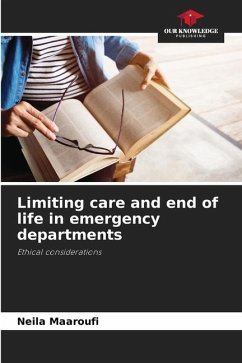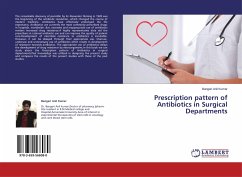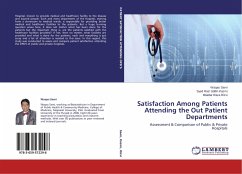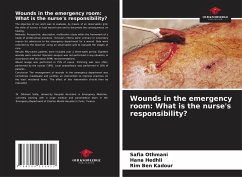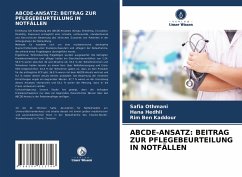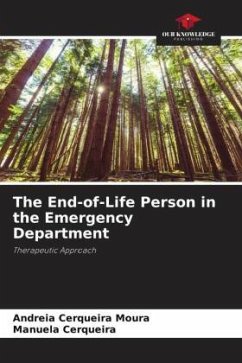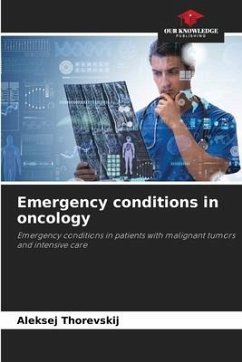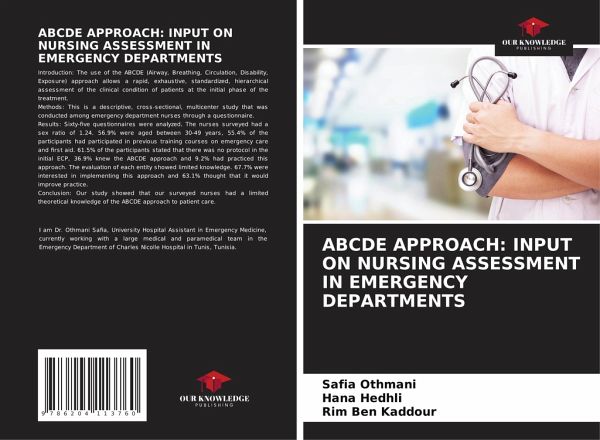
ABCDE APPROACH: INPUT ON NURSING ASSESSMENT IN EMERGENCY DEPARTMENTS
Versandkostenfrei!
Versandfertig in 6-10 Tagen
27,99 €
inkl. MwSt.

PAYBACK Punkte
14 °P sammeln!
Introduction: The use of the ABCDE (Airway, Breathing, Circulation, Disability, Exposure) approach allows a rapid, exhaustive, standardized, hierarchical assessment of the clinical condition of patients at the initial phase of the treatment. Methods: This is a descriptive, cross-sectional, multicenter study that was conducted among emergency department nurses through a questionnaire.Results: Sixty-five questionnaires were analyzed. The nurses surveyed had a sex ratio of 1.24. 56.9% were aged between 30-49 years, 55.4% of the participants had participated in previous training courses on emergen...
Introduction: The use of the ABCDE (Airway, Breathing, Circulation, Disability, Exposure) approach allows a rapid, exhaustive, standardized, hierarchical assessment of the clinical condition of patients at the initial phase of the treatment. Methods: This is a descriptive, cross-sectional, multicenter study that was conducted among emergency department nurses through a questionnaire.Results: Sixty-five questionnaires were analyzed. The nurses surveyed had a sex ratio of 1.24. 56.9% were aged between 30-49 years, 55.4% of the participants had participated in previous training courses on emergency care and first aid. 61.5% of the participants stated that there was no protocol in the initial ECP, 36.9% knew the ABCDE approach and 9.2% had practiced this approach. The evaluation of each entity showed limited knowledge. 67.7% were interested in implementing this approach and 63.1% thought that it would improve practice.Conclusion: Our study showed that our surveyed nurses had a limited theoretical knowledge of the ABCDE approach to patient care.





